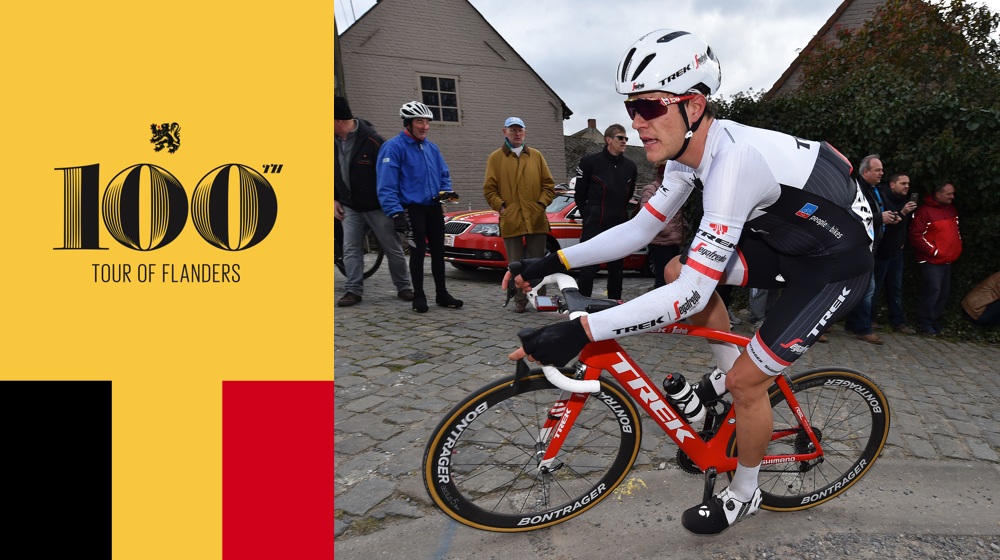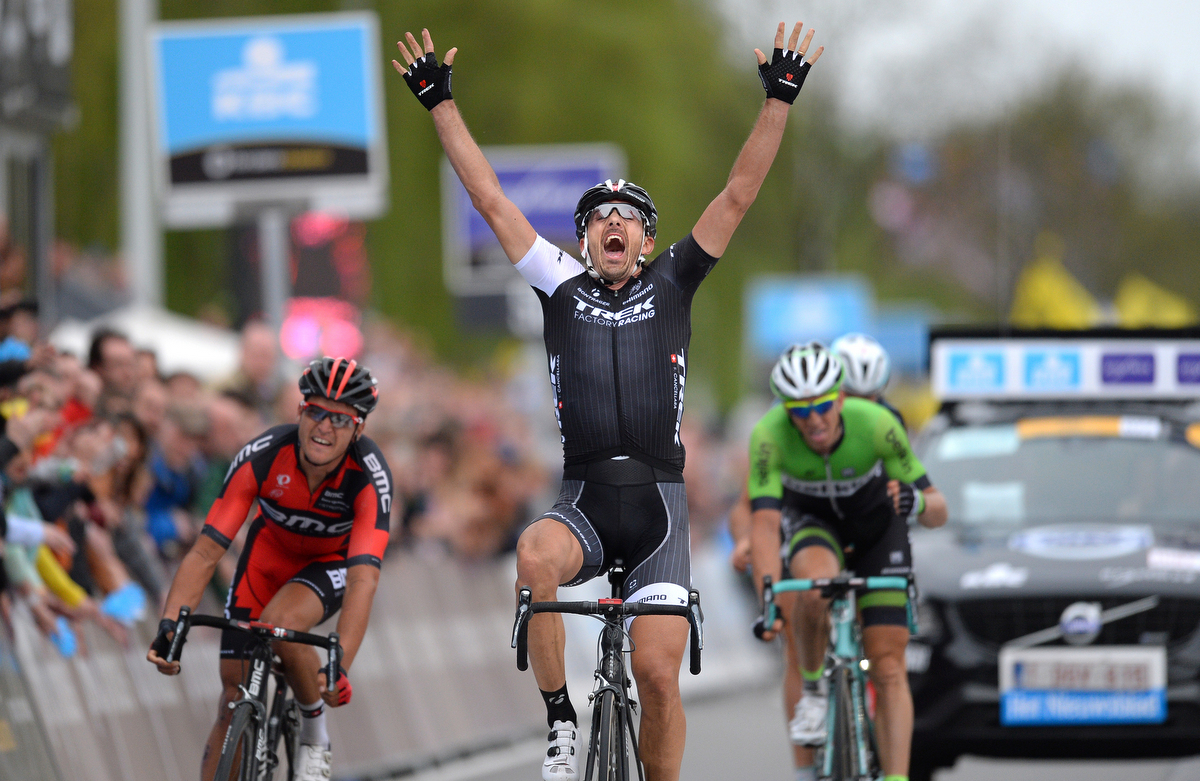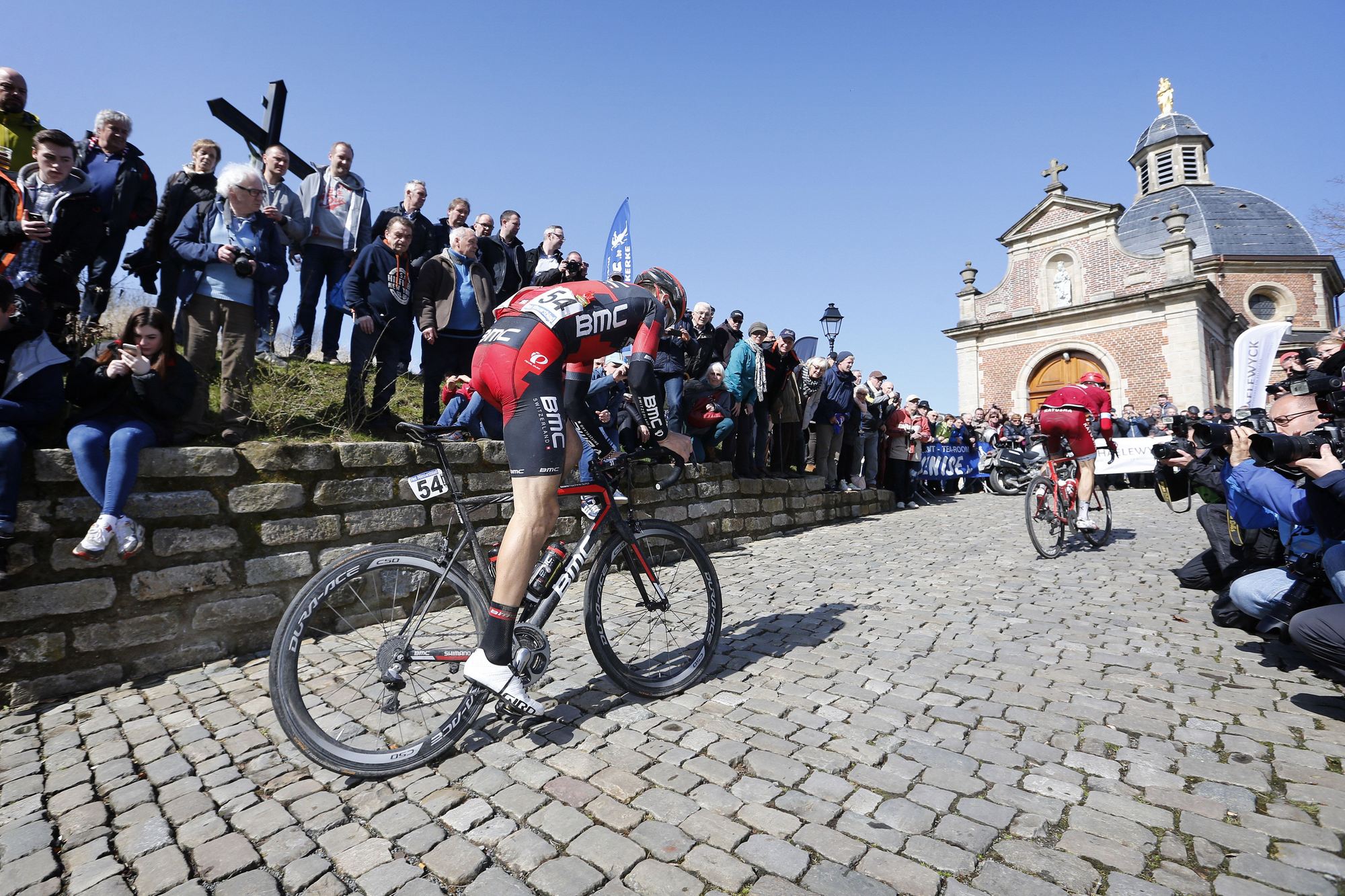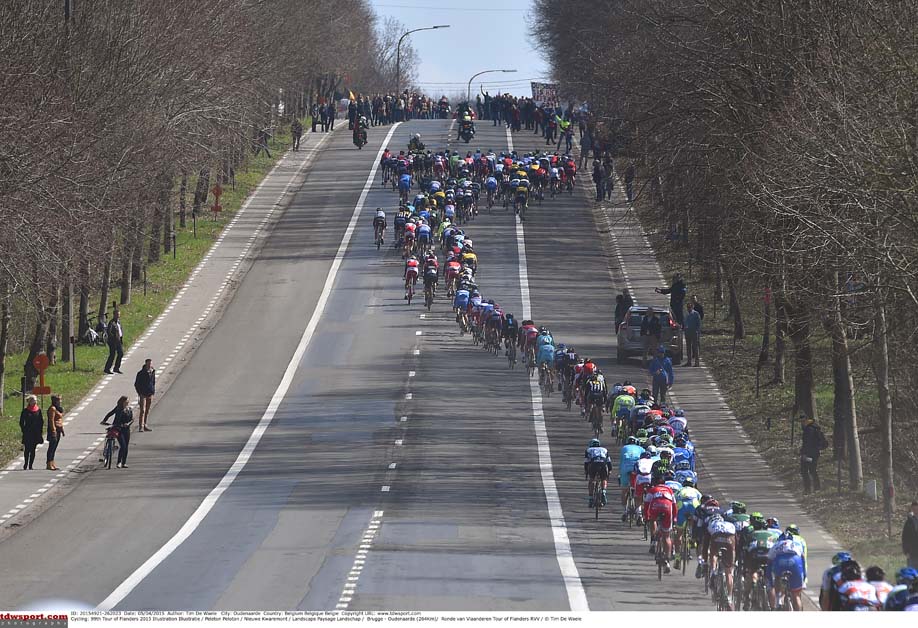Jasper Stuyven's Tour of Flanders preview
Flandrien describes the unique atmosphere and exigencies of De Ronde





The Tour of Flanders will celebrate its 100th edition this Sunday, and it is set to be a bumper race with Fabian Cancellara, Tom Boonen, Alexander Kristoff, Greg Van Avermaet, Peter Sagan and more all ready to duke it out for the title. Known as the Ronde Van Vlaanderen in native tongue, the race is the centrepiece of the Belgian racing calendar and sees a party atmosphere envelop the region.
Trek-Segafredo rider Jasper Stuyven is a local Flandrien and will be riding the race for the third time this Sunday, as he hopes to deliver Fabian Cancellara to a fourth and final victory. Stuyven knows the roads of the Tour of Flanders better than most, and he sat down with Cyclingnews to discuss what makes De Ronde the race it is and what it is like to ride one of the biggest races of the year.
The Tour of Flanders is a special race. On that one day, almost everyone in Belgium is coming out to the course to watch the race, to have a beer and have fun with friends and family, and watch the race passing by. It’s hard to describe the feelings and the atmosphere on race day as you ride on the bus into the starting area.
I remember my first Tour of Flanders in 2014. I didn’t have any nerves; I was just excited. We had Fabian that year, and I was thinking ’how nice would it be to finish this off?’ You know how hard everyone in the team has been training for this, so I was just excited to see how it would turn out.
I always try to enjoy the first part of the race because once you get to the climbs, it’s full of people. You need to make sure that you are focused all the time because when you try to ride on that bit on the side of the road, where the cobbles are not that bad, you are quite close to the spectators, so you have to be careful. You only have to put one foot wrong, and you’re crashing.
As you ride out of Bruges, you can see that the peloton is nervous already. There are the teams that want to be at the front to try and control the race, like us. Then you have the guys who want to be up front because they want to get into the break, and maybe they can survive and get into the final that way. Then, of course, you have the director in your ear saying you have to be there.
In my opinion, the neutral start is more nervous than any other race. But you have to keep energy because it’s one of the longest days on the bike. In the end, you have to find a balance between being excited and staying calm. You also need to remember to eat - that is very important. During the race, it doesn’t feel that stressful but in the days afterwards you realise that it wasn’t just physically tiring, but mentally it was a very hard day.
The latest race content, interviews, features, reviews and expert buying guides, direct to your inbox!
After 100 kilometres we are already riding up the Oude Kwaremont for the first time. There are still 150 kilometres to go but still all the leaders want to be there in a good position. You have to be ready always because the attack can come at any time. It’s not easy to know where the most important part is because it changes every year. Before last year, I would not say the winning attack would happen at the moment you turn onto the road after the Kruisberg, but then you saw last year that was where Niki and Kristoff attacked. So, is that a critical point now? I don’t know. We’ll just have to see.
Of course, the part with the Kwaremont and the Paterberg is always a critical point. The Oude Kwaremont is on this small road. You know that it is easy at first, but then it really starts to go up. It starts on the asphalt, and then you get onto the cobbles, and that’s where it gets nervous. You have guys passing you on the left and the right, and you just try to follow them. There is the moment you reach the top, and you think it’s over, but there is still the long section until the big road on the cobbles.
On the Paterberg, in every other race you can go in the gutter, but then at the Tour of Flanders, you can’t do that. It makes it harder because you have to ride on the cobbles. It’s really narrow roads going into it, and you can be in 10th position on the Paterberg, and that can still be too far back. The others attack and you can’t pass because the others aren’t able to follow. I think those are the two points where the most spectators are because we pass three times. It’s a great atmosphere, but we’re suffering a lot on these climbs. A lot.
When you’re having a good day, the cobbles feel smooth, but when you’re on a bad day, it can feel like you’re bouncing from stone to stone. Sometimes, you can feel like you are on a good day, and then you get the sensation of bouncing around on the cobbles and it can quickly become a bad day.
At the end of the race, you’re physically getting very tired, and you know that you have to be there in the front so that you can make it over the climb. I think that is the advantage of being a Belgian rider because you know exactly where you have to be in front. The advantage is even more because you know that after 200 kilometres anyway that you’re going to be tired. It might be different this year because I have made a step forward so I might not be suffering there quite as much until the very final.
It’s great to ride for a rider like Fabian, who has finished and won so many races. I had the luck to be in the team in my first year as a professional when we won the Tour of Flanders in 2014. You know how it feels when you win a big race like that, and I think now it motivates the riders and me to try to get that feeling again.